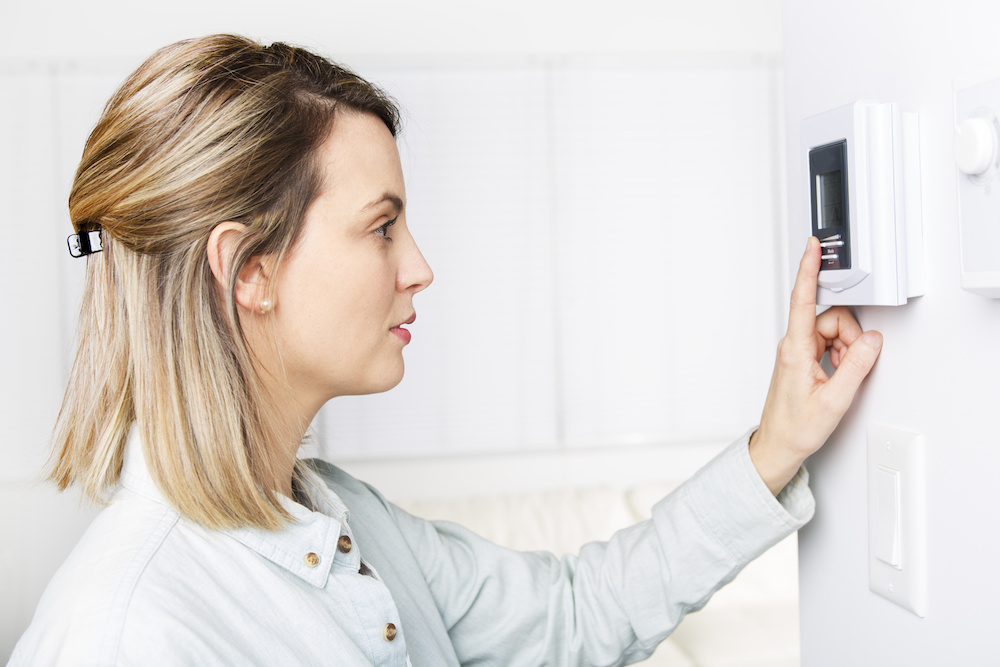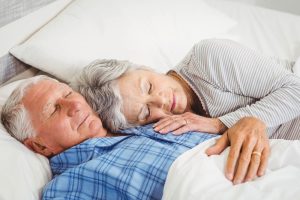
Feeling too warm or too cold at night can seem like a small problem. However, not sleeping in the ideal temperature for you can influence the quality of your sleep, which can affect the quality of your health. Research shows that optimal sleep conditions can help your health, including helping you feel rested. Likewise, poor sleep can affect your health negatively and even increase your appetite.
Don’t worry—you won’t need to play Goldilocks to find your ideal sleeping temperature—though it can sometimes feel like it. Below are a few adjustments you can make to your environment to ensure you have the best sleep temperature for you.
How Does Temperature Affect Sleep?
Did you know feeling warmer while you sleep is actually due to biology, and not necessarily the number of blankets on your bed?
According to Everyday Health, the average human temperature decreases 1-2 degrees as you sleep. Your body knows its ideal sleeping temperature and starts cooling down close to your regular bedtime. This is excellent news if you follow a bedtime routine that your body can sync to.
At the other end of the wake/sleep cycle, your temperature starts to warm up 1-2 degrees as it gets closer to when you would wake up naturally. This is why many people feel overheated and want to kick off blankets in the morning.
Beyond your body temperature, the state of your bedroom can also affect your sleep temperature. A drop in your core temperature triggers your body to start winding down for sleep, so finding ways to make sure your room stays a little cooler can improve your sleep quality. Think a cave—dark, quiet, and cool but not cold.
Best Temperature for Sleeping
So is there an actual number that is the best temperature for an ideal sleep? There is! The optimal bedtime temperature for sleeping ranges from 60-67 degrees F for adults and around 65-70 degrees F for infants.

Although men and women seem to have different ranges for their ideal temperatures when awake. A recent study discovered both genders prefer the same 60-67 degree range when sleeping.
Those with sleep apnea may find a deeper sleep at the bottom of that range. A study in Sweden invited 40 people with obstructive sleep apnea to spend one night with the ambient temperatures of 60 degrees F, 68 degrees F, and 75 degrees F.
The study found that the participants who slept in an environment at 60 degrees F experienced 30 more minutes of deep sleep and were more alert in the morning. However, it also showed that the number of apneas per hour increased at colder temperatures. Don’t worry, an extra 30 minutes of sleep is still within your grasp— just be sure to use your CPAP machine while sleeping in cooler temperatures.
A related sleep study at the Netherlands Institute for Neuroscience had participants sleep in a special suit that slightly cooled their bodies. Patients with obstructive sleep apnea reported better and less interrupted sleep.
Tips to Achieve the Ideal Sleeping Temperature
Consistently hitting the optimal sleep temperature can feel like trying to hit a moving target, especially in summer! However, we have a few suggestions to help make hitting that target a little bit easier.
- Try programming your thermostat to cool down a few hours before bedtime, so it’s just right when you’re ready to go to sleep. You can also try scheduling it a few degrees warmer for the morning to help you ease into waking up.
- Fans come in all shapes and sizes nowadays. We recommend testing out a few to see what helps you the best. Some prefer overhead fans as they can help circulate not only the air but also the air temperature.
- Try placing a hot water bottle, with hot or ice water, near your feet to help adjust your temperature temporarily.
- An open window can provide a breeze to cool everything down, though be sure to check the temperature outside before opening your window.
- Try sleeping with your bedroom door open. Having an open door can allow air to pass through the whole house, rather than just circulate in the bedroom.
Our temperature has a significant impact on how we sleep and how we wake up. While studies show 60-67 degrees F is the best temperature for sleeping, what have you found works for you? Let us know in the comments below.





One Response
This all sounds well and good,,,if you have a thermostat!